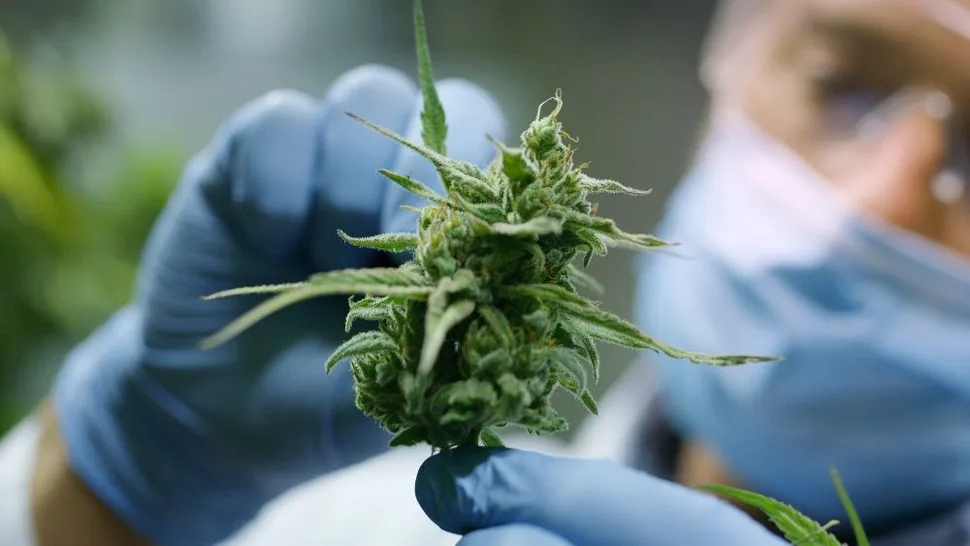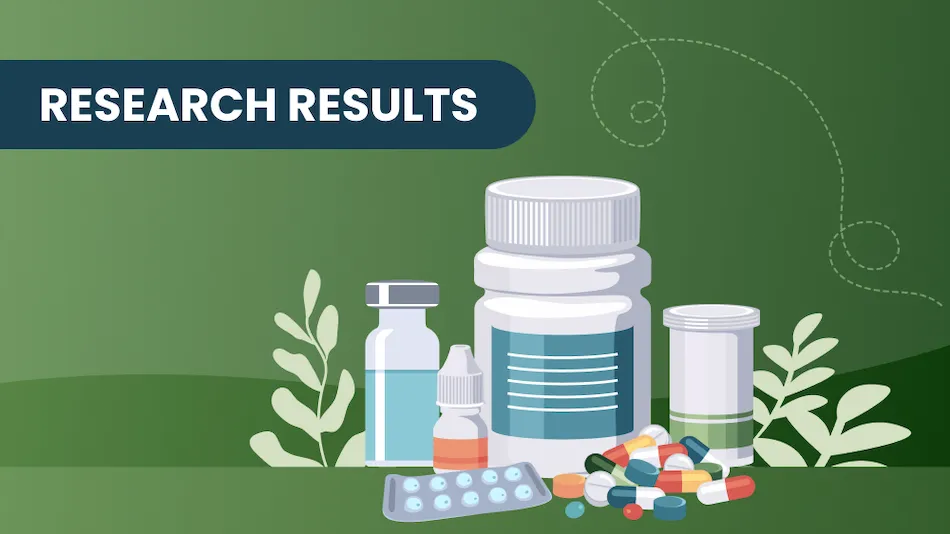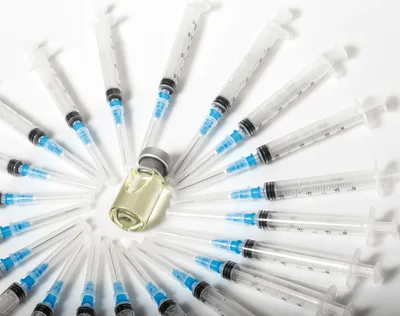HealthTree Research Results: Exploring Cannabis Use in Cancer Patients

Cannabis and cannabinoids are increasingly being considered by cancer patients for managing symptoms related to both the disease and its treatments. Despite its potential benefits, concerns among healthcare providers regarding the lack of high-quality data and regulatory challenges have hindered widespread recommendation. A recent study aimed to delve into patient-reported experiences with cannabis, focusing on its efficacy and safety, particularly as an alternative analgesic.
Surveying the Landscape
Conducted through the HealthTree Cure Hub, a 23-question survey was administered to 348 patients with plasma cell disorders, including multiple myeloma. The average age of respondents was 64 years, with a majority being female (58%).
Key Findings
- Nearly half of the respondents (48%) reported using cannabis during their treatment for multiple myeloma (MM), with 47% describing their use as regular (weekly for ≥ 1 month).
- Most users reported using both THC- and CBD-containing products, with common formulations including edibles, smoking/vaping, tincture/oil, and topical agents.
- Patients’ indications for cannabis use included pain, sleep, depression, anxiety, and stress reduction.
- Side effects such as dry mouth, brain fog, and dizziness were reported by a significant number of users.
- Barriers to cannabis use included concerns about high costs, side effects, drug interactions, and dosing, while fear of addiction was rare.
- A notable 57% of patients reported never discussing cannabis with their oncologist. Among those who did, the discussion was initiated by the patient in the majority of cases.
- Patient perceptions of their oncologists' ability to discuss the risks and benefits of cannabis varied, with 40% indicating the oncologist was "somewhat" able, and 27% stating "not at all" able.
- Only 15% reported that their oncologist made a referral to a specialist regarding cannabis use.
Impact on Pain Management
- When used for pain, cannabis was perceived as "mostly/completely effective" by 50% of respondents, and "somewhat effective" by 28%.
- Notably, 32% were able to avoid taking opioids altogether, while 17% were able to reduce their opioid doses.
Discussion and Future Directions
The study highlighted a significant prevalence of cannabis use among patients with plasma cell disorders, even during active treatment. Despite concerns and side effects, many users perceived benefits, including the prevention or reduction of opioid use.
The findings underscored the need for more proactive and open discussions between patients and oncologists about cannabis. Additionally, the study emphasized the importance of prospective research to evaluate the efficacy and safety of cannabis products in the context of multiple myeloma. As patients seek alternative ways to manage symptoms, continued exploration of cannabis's role in cancer care remains a priority.
Abstract
Cannabis/cannabinoid use continues to increase among cancer patients, with studies supporting its efficacy for cancer- and treatment-related symptoms. Despite this, lack of high-quality data and regulatory challenges have caused hesitancy among providers to recommend its use. We previously demonstrated a negative risk of chronic opioid use on survival in myeloma patients (Sweiss et al, ASH abstract 2022).
Given this, we aimed to improve our understanding of the patient-reported efficacy and safety of cannabis, with emphasis on its role as an alternative analgesic. Using the HealthTree Cure Hub, we prospectively administered a 23-question survey to patients with plasma cell disorders.
Among 348 respondents, average age was 63.8 ± 12.4 years. Most were female (n=195, 58%). 259 (91%) were White and 22 (9%) were Black. 166 (48%) reported using cannabis during treatment for their MM, with 78 (47%) describing use as regular (weekly for ≥ 1 month). Prior cannabis use predicted for continued use during treatment for MM (p<0.001). Most reported using both THC- and CBD-containing products (60%).
The most common formulations were edibles (76%), smoking/vaping (48%), tincture/oil (34%), and topical agents (31%). 124 (77%) obtained cannabis illegally or reported growing their own (n=33, 20%). Indications for use were pain (71%), sleep (73%), depression (32%), anxiety (29%), and stress reduction. A high prevalence of side effects was reported including dry mouth (50%), brain fog (50%), and dizziness (14%). Concern over high cost (27%) and side effects/drug interactions/dosing (51%) were identified as barriers experienced during cannabis use, while “fear of addiction” (4%) was rare.
195 (57%) patients reported never having a discussion with their oncologist about cannabis. Among those who did, it was ultimately initiated by the patient (89%). Most perceived that the oncologist was “somewhat” (40%) or “not at all” (27%) able to discuss the risks/benefits (Fig A). Only 22 (15%) reported that the oncologist made a referral to a specialist. When used for pain, cannabis was indicated to be “mostly/completely effective” (50%) or “somewhat effective” (28%). 52 (32%) were able to avoid taking opioids all together, while 28 (17%) were able to reduce the dose of opioids (Fig B).
We observed a high frequency of cannabis use in patients with plasma cell disorders undergoing treatment, including autologous transplant. Most expressed benefit despite side effects and an association with prevention or reduction in opioid use. A high number of respondents believed that the provider’s role in recommending cannabis, having knowledge on the topic, or making referrals was minimal. Prospective studies evaluating the efficacy and safety of cannabis products in MM is of high priority.
The following people conducted the research:
Karen Sweiss, PharmD1, Jay R. Hydren, PhD2, Jorge Arturo Hurtado Martinez, MD3, Douglas W. Sborov4, Pritesh Rajni Patel, MB, ChB5, Lisa Sharp, PhD, BSN, MA6, Jennifer M. Ahlstrom, BS2 and Craig Hofmeister, MD7, (1)College of Pharmacy, Cancer Center, University of Illinois at Chicago, Chicago, IL, (2)HealthTree Foundation, Lehi, UT, (3)HealthTree Foundation, Salt Lake City, UT, (4)Huntsman Cancer Institute and Hospital, Salt Lake City, UT, (5)Division of Hematology/Oncology, Cancer Center, University of Illinois at Chicago, Chicago, IL, (6)Pharmacy Systems, Outcomes, and Policy, University of Illinois at Chicago, Chicago, IL, (7)Department of Hematology and Medical Oncology, Winship Cancer Institute of Emory University, Atlanta, GA
Interested in more myeloma research findings from our HealthTree team?
Read here: HealthTree Research Publications
Cannabis and cannabinoids are increasingly being considered by cancer patients for managing symptoms related to both the disease and its treatments. Despite its potential benefits, concerns among healthcare providers regarding the lack of high-quality data and regulatory challenges have hindered widespread recommendation. A recent study aimed to delve into patient-reported experiences with cannabis, focusing on its efficacy and safety, particularly as an alternative analgesic.
Surveying the Landscape
Conducted through the HealthTree Cure Hub, a 23-question survey was administered to 348 patients with plasma cell disorders, including multiple myeloma. The average age of respondents was 64 years, with a majority being female (58%).
Key Findings
- Nearly half of the respondents (48%) reported using cannabis during their treatment for multiple myeloma (MM), with 47% describing their use as regular (weekly for ≥ 1 month).
- Most users reported using both THC- and CBD-containing products, with common formulations including edibles, smoking/vaping, tincture/oil, and topical agents.
- Patients’ indications for cannabis use included pain, sleep, depression, anxiety, and stress reduction.
- Side effects such as dry mouth, brain fog, and dizziness were reported by a significant number of users.
- Barriers to cannabis use included concerns about high costs, side effects, drug interactions, and dosing, while fear of addiction was rare.
- A notable 57% of patients reported never discussing cannabis with their oncologist. Among those who did, the discussion was initiated by the patient in the majority of cases.
- Patient perceptions of their oncologists' ability to discuss the risks and benefits of cannabis varied, with 40% indicating the oncologist was "somewhat" able, and 27% stating "not at all" able.
- Only 15% reported that their oncologist made a referral to a specialist regarding cannabis use.
Impact on Pain Management
- When used for pain, cannabis was perceived as "mostly/completely effective" by 50% of respondents, and "somewhat effective" by 28%.
- Notably, 32% were able to avoid taking opioids altogether, while 17% were able to reduce their opioid doses.
Discussion and Future Directions
The study highlighted a significant prevalence of cannabis use among patients with plasma cell disorders, even during active treatment. Despite concerns and side effects, many users perceived benefits, including the prevention or reduction of opioid use.
The findings underscored the need for more proactive and open discussions between patients and oncologists about cannabis. Additionally, the study emphasized the importance of prospective research to evaluate the efficacy and safety of cannabis products in the context of multiple myeloma. As patients seek alternative ways to manage symptoms, continued exploration of cannabis's role in cancer care remains a priority.
Abstract
Cannabis/cannabinoid use continues to increase among cancer patients, with studies supporting its efficacy for cancer- and treatment-related symptoms. Despite this, lack of high-quality data and regulatory challenges have caused hesitancy among providers to recommend its use. We previously demonstrated a negative risk of chronic opioid use on survival in myeloma patients (Sweiss et al, ASH abstract 2022).
Given this, we aimed to improve our understanding of the patient-reported efficacy and safety of cannabis, with emphasis on its role as an alternative analgesic. Using the HealthTree Cure Hub, we prospectively administered a 23-question survey to patients with plasma cell disorders.
Among 348 respondents, average age was 63.8 ± 12.4 years. Most were female (n=195, 58%). 259 (91%) were White and 22 (9%) were Black. 166 (48%) reported using cannabis during treatment for their MM, with 78 (47%) describing use as regular (weekly for ≥ 1 month). Prior cannabis use predicted for continued use during treatment for MM (p<0.001). Most reported using both THC- and CBD-containing products (60%).
The most common formulations were edibles (76%), smoking/vaping (48%), tincture/oil (34%), and topical agents (31%). 124 (77%) obtained cannabis illegally or reported growing their own (n=33, 20%). Indications for use were pain (71%), sleep (73%), depression (32%), anxiety (29%), and stress reduction. A high prevalence of side effects was reported including dry mouth (50%), brain fog (50%), and dizziness (14%). Concern over high cost (27%) and side effects/drug interactions/dosing (51%) were identified as barriers experienced during cannabis use, while “fear of addiction” (4%) was rare.
195 (57%) patients reported never having a discussion with their oncologist about cannabis. Among those who did, it was ultimately initiated by the patient (89%). Most perceived that the oncologist was “somewhat” (40%) or “not at all” (27%) able to discuss the risks/benefits (Fig A). Only 22 (15%) reported that the oncologist made a referral to a specialist. When used for pain, cannabis was indicated to be “mostly/completely effective” (50%) or “somewhat effective” (28%). 52 (32%) were able to avoid taking opioids all together, while 28 (17%) were able to reduce the dose of opioids (Fig B).
We observed a high frequency of cannabis use in patients with plasma cell disorders undergoing treatment, including autologous transplant. Most expressed benefit despite side effects and an association with prevention or reduction in opioid use. A high number of respondents believed that the provider’s role in recommending cannabis, having knowledge on the topic, or making referrals was minimal. Prospective studies evaluating the efficacy and safety of cannabis products in MM is of high priority.
The following people conducted the research:
Karen Sweiss, PharmD1, Jay R. Hydren, PhD2, Jorge Arturo Hurtado Martinez, MD3, Douglas W. Sborov4, Pritesh Rajni Patel, MB, ChB5, Lisa Sharp, PhD, BSN, MA6, Jennifer M. Ahlstrom, BS2 and Craig Hofmeister, MD7, (1)College of Pharmacy, Cancer Center, University of Illinois at Chicago, Chicago, IL, (2)HealthTree Foundation, Lehi, UT, (3)HealthTree Foundation, Salt Lake City, UT, (4)Huntsman Cancer Institute and Hospital, Salt Lake City, UT, (5)Division of Hematology/Oncology, Cancer Center, University of Illinois at Chicago, Chicago, IL, (6)Pharmacy Systems, Outcomes, and Policy, University of Illinois at Chicago, Chicago, IL, (7)Department of Hematology and Medical Oncology, Winship Cancer Institute of Emory University, Atlanta, GA
Interested in more myeloma research findings from our HealthTree team?
Read here: HealthTree Research Publications

about the author
Jay Hydren, PhD, CSCS
I’m a clinical researcher, with over 14 years of experience investigating various aspects of human health, nutrition and physiology. My PhD encompassed the broad topics of nutrition and integrative physiology with particular focus on age related diseases and vascular health. My most recent work focuses on accelerating a cure and treatments for Multiple Myeloma. I’m also working to improve patient experiences and decision-making processes for cancer treatment and care. To complement these critical research efforts, I enjoy hiking and skiing in Utah and surrounding states, along with training my dog and digital photography.
More on HealthTree Research
Trending Articles
Upcoming Events




Get the Latest Multiple Myeloma Updates, Delivered to You.
By subscribing to the HealthTree newsletter, you'll receive the latest research, treatment updates, and expert insights to help you navigate your health.
Together we care.
Together we cure.
3x Faster.













